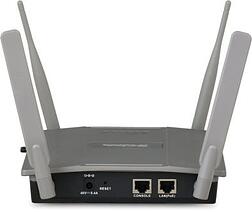CONTROLLER VS. CONTROLLERLESS WIFI
Have you ever heard of the terms thin AP’s, fat AP’s, wifi controller, or controllerless wifi in regards to wireless? Chances are if you’ve been anywhere near the Information Technology field in the last 10 years you’ve probably heard of at least one of them.
If not, let’s break down some of these terms and talk about their place in a wireless network.

Fat AP’s, or Autonomous AP’s were the first type of access points that were introduced onto the wireless market.
These were perfect for small scale wireless network solutions that needed no more than 10-15 clients per access point or were just providing “hot-spot” type of services.
These AP’s are called autonomous AP’s since they each are their own entity.
Each fat AP needs to be manually configured for the network and security settings you would want running on your network. This is a great solution if you only plan on having a few AP’s.
Any more than that just wasn’t scalable. No administrator wants to have to manually configure multiple devices – thus the need for a change.
WLAN Controllers with thin AP’s was the next evolution in WLANs that changed the face of wireless. A thin AP is simply an access point that is managed by a WLAN controller.
The WLAN controller provides the thin AP its configuration and also functions as a switch for all the wireless traffic. The WLAN controller also consolidated management for the entire wireless network in one place.
Some WLAN controllers perform functions such as a Stateful firewall between the wired/wireless networks, VPN connectivity, Intrusion Detection / Prevention services, spectrum monitoring/analysis, and much more.
WLAN controllers are physical devices that are rack mounted in the core data room and communicate with each AP at the same time.
This allows for easy and quick configuration of multiple AP’s without having to manually configure each and every one.
It also eliminates the need to re-architect your wired network to host a WLAN.
As you might assume, scalability is greatly improved by the addition of a WLAN controller as it easily allows the installation of more AP’s onto the network and reduces deployment and management complexities.

Controller-less access points have been the next breakthrough recently in wireless technology.
At first you hear the word “controller-less” and you think, “Wait a second. But I like controllers!” Well don’t worry, WLAN controllers aren’t going anywhere.
Over the past few years there have been huge improvements to the technologies we use today. One of them is virtualization.
Wireless vendors now have started to implement this into their wireless products.
Because of the advancement of physical components inside access points (chipsets, memory, etc.) developers have now found a way to virtualize controller software and run it on the old “thin” AP’s themselves.
This is a huge breakthrough for wireless because it means that now multiple AP’s can still be managed from one interface without the addition of a physical rack-mounted controller.
For many clients this is a great avenue for them since physical WLAN controllers may be out of their budget or simply overkill for their needs– yet they would still like the ease of controller-based management. 
Primarily all wireless networks today that are in the commercial or educational environment are managed by controllers of some sort.
The IT community as a whole depends largely on secure wireless networks and does not have the luxury of configuring AP’s individually.
The introduction of the controller has streamlined and reduced the complexity of WLANs whether they are controller or controller-less based.
Article Provided By:SecurEdge
![]()
If you would like liquidvideotechnologies.com to discuss developing your Home Security System, Networking, Access Control, Fire, IT consultant or PCI Compliance, please do not hesitate to call us at 864-859-9848 or you can email us at deveren@liquidvideotechnologies.com


Recent Comments